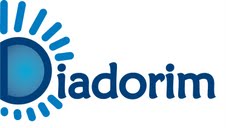AVALIAÇÃO DA DISTRIBUIÇÃO DE CÁDMIO (Cd) E NEMATOIDES EM SOLO LOCALIZADO EM TORNO DO “ATERRO SANITÁRIO” DE CERES – GO
Resumo
Os aumentos dos níveis de metais pesados no solo podem ser atribuídos ao uso de fertilizantes e outros agroquímicos, a emissão natural de gases, a deposição de resíduos industriais, a queima de combustíveis, aplicação de rejeitos urbanos, e, deposito de resíduos urbanos em aterros sanitários mal projetados e conduzidos. O objetivo deste trabalho foi avaliar a distribuição de Cádmio (Cd) em solo localizado em torno do “Aterro Sanitário” de Ceres - GO. O solo foi coletado em uma grade regular georreferenciada na profundidade de 0,00-0,20 m para análise granulométrica, da fertilidade do solo, e da concentração de Cádmio (Cd). Os dados foram submetidos à análise descritiva e geoestatística. Os resultados obtidos foram avaliados buscando entender a dinâmica do Cd em profundidade e ao longo do relevo. Não houve a presença de Cádmio solúvel e Cádmio total na área de lixão. Houve predomínio do gênero Meloidgyne spp. na área do lixão.
Abstract
Increases in soil heavy metal levels can be attributed to fertilizers and other agrochemicals, natural gas emissions, industrial waste disposal, fuel combustion, urban waste disposal, and urban waste disposal in poorly designed and conducted landfills. The objective of this work will be to evaluate the distribution of Cadmium (Cd) in soil located around the Ceres - GO Landfill. The soil will be collected in a regular georeferenced grid at a depth of 0.00-0.20 m for granulometric analysis, soil fertility, and cadmium (Cd) concentration. The data will be submitted to descriptive and geostatistical analysis. The results will be evaluated, trying to understand the dynamics of Cd in-depth and along with the relief. There was no presence of soluble cadmium and total cadmium in the dump area. There was a predominance of the genus Meloidogyne spp. in the dump área.












